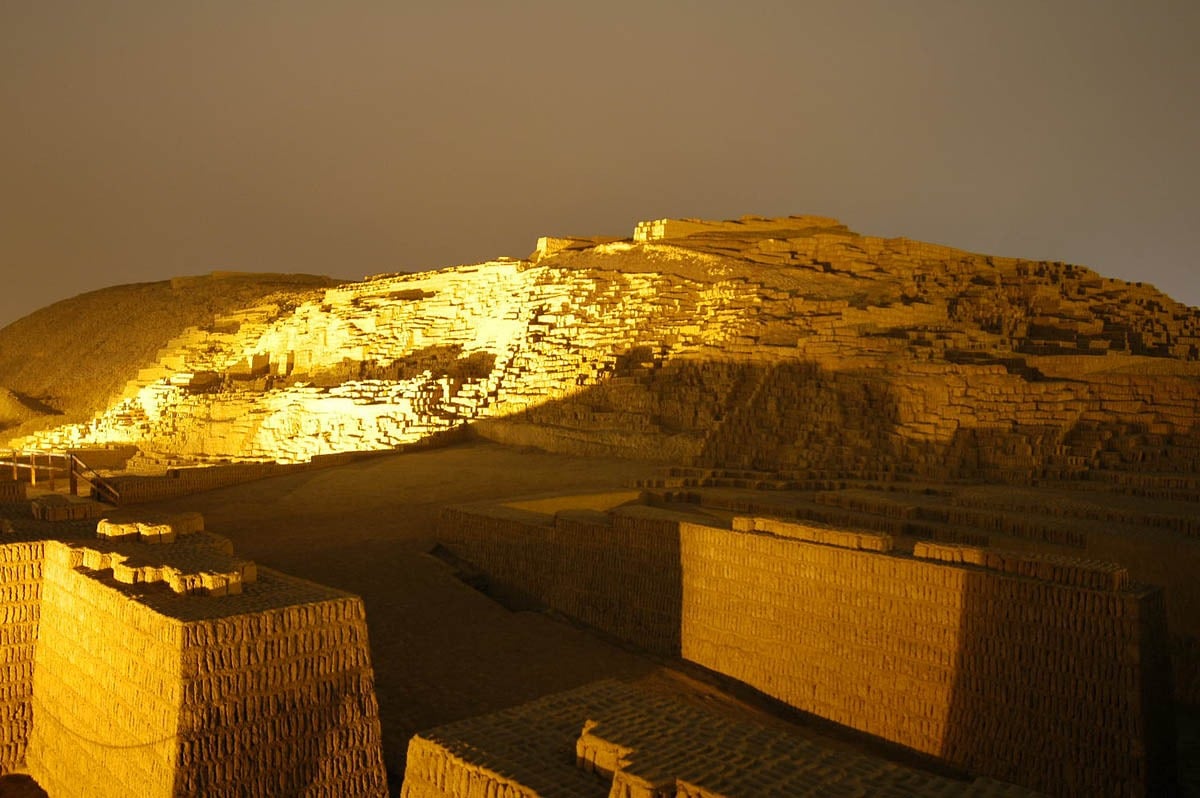Huaca Pucllana: A Must-See Ancient Pyramid In Lima, Peru
If you have a free day in Lima, Peru, and you’ve already checked out the museums and savored the amazing local cuisine, why not dive into the city’s ancient past?
Right in the heart of the Miraflores district, the Huaca Pucllana pyramid offers a fascinating escape from the modern city around it.
This massive adobe and clay pyramid is one of Lima’s most important historical sites.
It will give you a unique look at the Lima Culture, a civilization that thrived from around 200 AD to 700 AD.

What’s Huaca Pucllana All About?
First things first, what exactly is a “Huaca”?
In Quechua, an ancient language that is still spoken in the Andes, “huaca” (or “wak’a”) refers to something sacred—be it an object, a monument, or a place.
These huacas were deeply significant to the indigenous people of Peru, often seen as sacred spots where the earthly and spiritual worlds connected.

How Did Huaca Pucllana Come to Be?
Huaca Pucllana was built around 200 AD by the Lima Culture, an advanced society that knew how to make the most of Peru’s limited farmland.
They picked the perfect spot for this pyramid—close to the Pacific Ocean and the Rímac River—so they could easily manage their water resources.
This was crucial since water was key to their survival and growth.

The pyramid wasn’t just a massive structure; it was a symbol of power.
The clergymen who led the society used it to show they were in control of the land and water around them.
As the population grew, so did the importance of Huaca Pucllana, becoming a central place for both running the community and holding important ceremonies.

The Structure and Its Purpose
Huaca Pucllana is a massive structure composed of seven staggered platforms.
It’s surrounded by a plaza and a big wall that splits it into two main sections, each serving a different purpose.
The Western Ruins
This section was primarily used for administrative and regulatory purposes.
Here, the Lima Culture’s leaders would meet to discuss strategies for the expansion and management of their society.

The area also housed storage facilities for agricultural products, highlighting the importance of food security in this coastal community.
Control over fresh and saltwater resources was crucial, and the western ruins provided the necessary oversight to ensure the community’s prosperity.
The Eastern Ruins
The eastern section of Huaca Pucllana was more spiritually significant.
This area was likely reserved for religious rites and ceremonies conducted by the high priests of the Lima Culture.

The pyramid’s towering height of 22 meters (72 feet) made it a fitting place to honor Pachamama, the Andean equivalent of Mother Earth.
Grand feasts and ritual banquets were held here, and during times of crisis—such as drought or poor harvests—offerings, including human sacrifices, were made to appease the gods.

The Wari Influence
Around 700 AD, the Lima Culture started to decline, and Huaca Pucllana was eventually abandoned.
But it didn’t stay empty for long.
The Wari Culture, from the Ayacucho region, moved in and repurposed the pyramid.
They turned the upper part into a tomb for their aristocracy, which meant altering the original structure.
It wasn’t until 2008 that archaeologists confirmed this when they found three bodies buried in the ruins, including a child who had been sacrificed.

Huaca Pucllana Today
Urbanization over the years has shrunk Huaca Pucllana to about a third of its original size—only six hectares remain.
But thanks to preservation efforts by the Peruvian government, this ancient site is still standing strong.
Today, Huaca Pucllana is a must-see for anyone interested in Lima’s history, offering a rare glimpse into a civilization that’s long gone but not forgotten.

So, if you’re in Lima and looking for something truly special to do, a visit to Huaca Pucllana is like stepping back in time.
It’s a fascinating way to connect with the city’s ancient roots and see how life might have been thousands of years ago.


